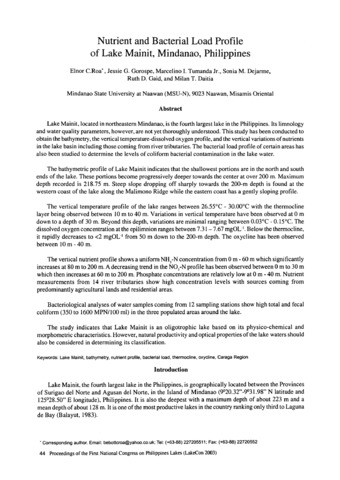| dc.contributor.author | Coloso, R. M. | |
| dc.contributor.author | King, K. | |
| dc.contributor.author | Fletcher, J. W. | |
| dc.contributor.author | Weis, P. | |
| dc.contributor.author | Werner, A. | |
| dc.contributor.author | Ferraris, R. P. | |
| dc.date.accessioned | 2014-03-25T09:27:45Z | |
| dc.date.available | 2014-03-25T09:27:45Z | |
| dc.date.issued | 2003 | |
| dc.identifier.citation | Coloso, R. M., King, K., Fletcher, J. W., Weis, P., Werner, A., & Ferraris, R. P. (2003). Dietary P regulates phosphate transporter expression, phosphatase activity, and effluent P partitioning in trout culture. Journal of Comparative Physiology B, 173(6), 519-530. | en |
| dc.identifier.issn | 0174-1578 | |
| dc.identifier.uri | http://hdl.handle.net/10862/1957 | |
| dc.description.abstract | Phosphate utilization by fish is an important issue because of its critical roles in fish growth and aquatic environmental pollution. High dietary phosphorus (P) levels typically decrease the efficiency of P utilization, thereby increasing the amount of P excreted as metabolic waste in effluents emanating from rainbow trout aquaculture. In mammals, vitamin D3 is a known regulator of P utilization but in fish, its regulatory role is unclear. Moreover, the effects of dietary P and vitamin D3 on expression of enzymatic and transport systems potentially involved in phosphate utilization are little known. We therefore monitored production of effluent P, levels of plasma vitamin D3 metabolites, as well as expression of phosphatases and the sodium phosphate cotransporter (NaPi2) in trout fed semipu diets that varied in dietary P and vitamin D3 levels. Mean soluble P concentrations varied markedly with dietary P but not with vitamin D3, and constituted 40–70% of total effluent P production by trout. Particulate P concentrations accounted for 25–50% of effluent P production, but did not vary with dietary P or vitamin D3. P in settleable wastes accounted for <10% of effluent P. The stronger effect of dietary P on effluent P levels is paralleled by its striking effects on phosphatases and NaPi2. The mRNA abundance of the intestinal and renal sodium phosphate transporters increased in fish fed low dietary P; vitamin D3 had no effect. Low-P diets reduced plasma phosphate concentrations. Intracellular phytase activity increased but brushborder alkaline phosphatase activity decreased in the intestine, pyloric caeca, and gills of trout fed diets containing low dietary P. Vitamin D3 had no effect on enzyme activities. Moreover, plasma concentrations of 25-hydroxyvitamin D3 and of 1,25-dihydroxyvitamin D3 were unaffected by dietary P and vitamin D3 levels. The major regulator of P metabolism, and ultimately of levels of P in the effluent from trout culture, is dietary P. | en |
| dc.description.sponsorship | This project was supported by the Northeastern Regional Aquaculture Center (NRAC)-USDA Grant no. 94-38500-0044) and USDA-CSREES-NRI Grant no. 2001-35102-09881. R. Ferraris’ laboratory also received support from NSF-IBN9985805. We thank S. Basantes, A. Garcia, J. Choi, and F. Liu for help in the chemical analyses of the water, fecal, and carcass samples, Dr. M. Subramanyam for his suggestions on the formulation of the semi-purified diets, P. Farrell for the expert technical assistance during field sampling, F. Jarder for the proximate analyses of the diets, K. Powers of Pequest Fish Hatchery for the fish and Dr. A. Ritter for statistical advice. | en |
| dc.language.iso | en | en |
| dc.publisher | Springer Verlag | en |
| dc.subject | phytase | en |
| dc.subject | Sodium-phosphate cotransporter | en |
| dc.title | Dietary P regulates phosphate transporter expression, phosphatase activity, and effluent P partitioning in trout culture | en |
| dc.type | Article | en |
| dc.identifier.doi | 10.1007/s00360-003-0360-x | |
| dc.citation.volume | 173 | |
| dc.citation.issue | 6 | |
| dc.citation.spage | 519 | |
| dc.citation.epage | 530 | |
| dc.citation.journalTitle | Journal of Comparative Physiology B: Biochemical, Systemic, and Environmental Physiology | en |
| seafdecaqd.library.callnumber | VF SJ 0762 | |
| seafdecaqd.databank.controlnumber | 2003-32 | |
| dc.subject.asfa | aquaculture effluents | en |
| dc.subject.asfa | diet | en |
| dc.subject.asfa | enzymatic activity | en |
| dc.subject.asfa | excretion | en |
| dc.subject.asfa | feeding experiments | en |
| dc.subject.asfa | phosphates | en |
| dc.subject.asfa | phosphorus | en |
| dc.subject.asfa | pollution control | en |
| dc.subject.asfa | vitamin D | en |
| dc.subject.asfa | nutrition | en |
| dc.subject.asfa | fish | en |
| dc.identifier.essn | 1432-136X | |




